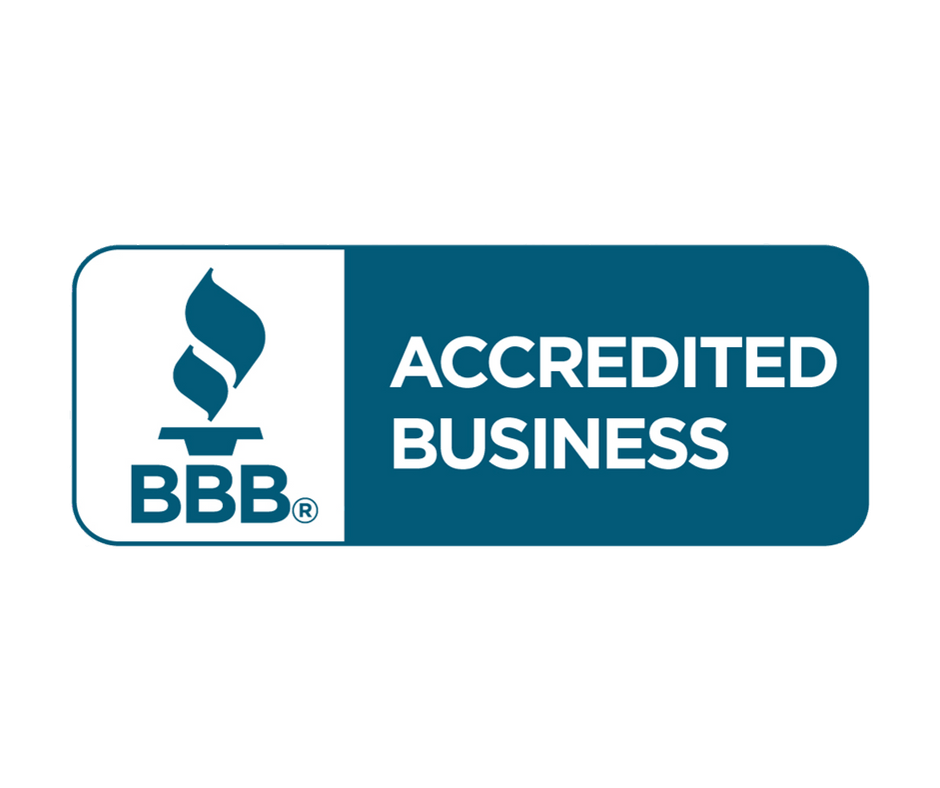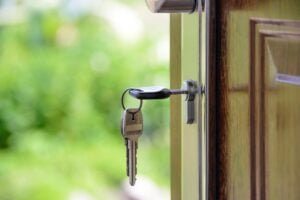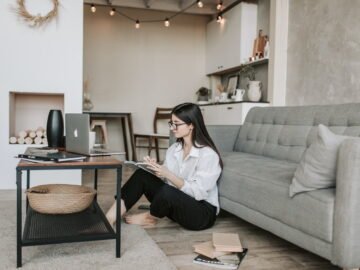Four Tips for Creating and Retrofitting Homes to be Mold-Resistant
Four Tips for Creating and Retrofitting Homes to be Mold-Resistant
Molds are Resilient Organisms
Mold is fascinating. Often unsightly and sometimes dangerous, this fungus is almost always unwelcome in any building. However, like humans, molds are resilient organisms. And since there are millions of mold spores around us right now, chances are high that we will all encounter mold at some point.
That doesn’t mean there isn’t anything we can do. In fact, here are four tips for creating or retrofitting a home to be mold-resistant.
Understand Where, How, and Why Mold Grows
The best defense starts with knowledge. Without understanding mold, addressing it is much more difficult.
To grow, mold requires some specific conditions. These are:
- Available food sources, such as wood, grease, drywall, and food.
- Temperatures between 60 and 80 degrees Fahrenheit.
- Low or inadequate air movement.
- High-moisture areas, including high humidity, standing water, and dripping pipes.
Like other fungi, mold also prefers dark locations for growth. Favorable dark spaces can include crawlspaces, within cabinets, and behind drywall.
As long as these conditions exist, mold spores will replicate and grow into colonies. Plus, mold can consume most organic materials. Until the food and moisture are removed, mold will continue to spread.

Avoid Mold-Favorable Conditions
Once you understand the mold-favorable issues facing your home, you can get to work. Mold can survive on drywall and carpet, so even a home with no food can still grow mold. Likewise, eliminating all areas of darkness is simply impossible. However, there are two major ways to make your home unwelcoming to mold.
First, take care of the most problematic issues. Existing mold colonies and high-moisture areas should be addressed first. Moisture control is essential to reduce the potential for mold growth. Even after cleaning, mold will return to an area with high moisture.
Use dehumidifiers and household desiccants to reduce humidity to within 30%-50%. Fix any leaks, especially in hard-to-see areas. Cover surfaces prone to condensation with moisture barriers or other such materials.
Second, make sure your home has adequate ventilation. Without proper airflow, mold spores and humidity can linger and lead to mold growth. Additionally, moisture is much slower to evaporate without circulating air.
To ensure proper ventilation:
- Keep vents and doors open to allow air to move.
- Use fans throughout the house, especially in high humidity areas (such as bathrooms).
- Open windows periodically for improved air exchange.
Ventilation-related mold growth has seen an uptick due to energy-efficient construction. A crux of green homes is to create a sealed building envelope. This keeps energy and emission losses low. However, it also reduces natural airflow, as typical building gaps have been eliminated.
A home with ample ventilation and lower humidity will thus be more difficult for mold growth to start.

Use Mold-Resistant Materials
If you’re building your home or adding on to it, use mold-resistant materials. Retrofitting a house to resist mold is a decisive step in avoiding future mold issues.
Common materials that are available in mold-resistant offerings include:
- Wood and lumber.
- Drywall, such as greenboard.
- Insulation and other barriers.
- Paints, sealants, and caulks.
These materials have been treated with fungicides and other antimicrobial chemicals. Some materials, like fiberglass insulation, are naturally repellent to mold growth. Additionally, mold-resistant materials contain other helpful properties. Mold-resistant drywall also features water damage protection, and caulks contain anti-mildew coatings.
Look for GREENGUARD Certified materials. Such materials are rated to have low chemical emissions. Thus, the risk of exposure to these chemicals is much reduced.
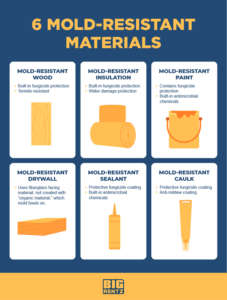
Clean With Safety in Mind
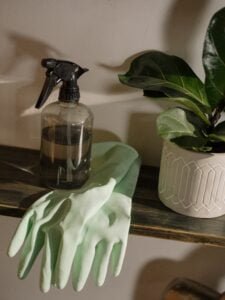
Mold can be dangerous. There are several types of mold commonly found within a home, and several can cause health issues ranging from infections to asthma.
Even molds that don’t produce dangerous compounds can cause allergies. Indeed, the longer the mold exists, the more likely one is to become allergic to it. For people with existing health concerns, molds can be even more dangerous. Still, the act of cleaning up brings its own hazards.
For instance, disturbing mold can release spores into the air. This can cause irritations or other effects. When cleaning up mold, wear proper PPE, including filtered masks, gloves, and goggles. Turn off your HVAC system, so you don’t spread spores into other areas of the house.
If you have to clean a mold issue, remember these tips:
- Discard anything with moderate (or more) mold growth.
- Fix leaks, standing water, or other moisture issues first.
- Clean non-porous surfaces with bleach or other biocidal agents
Sometimes, unknown mold issues can be exposed by remodeling or other projects. Often, preparing a house for sale can unearth mold issues. And without any previous sign, these issues can be greater than expected. Large mold problems can pose significant health risks. Extensive mold can survive surface cleaning. Without specialized help, mold can keep coming back. If needed, professional mold-remediation services should be used.
Final Thoughts
Don’t take mold lightly; it can damage your home and make you sick. Mold spores are everywhere, but keeping a mold-resistant home reduces the chance of mold growth.
Keep humidity low and ventilation high. Use mold-resistant materials, like caulk and insulation, when remodeling. If you do have a mold issue, gear up and use bleach or store-bought products to clean non-porous surfaces. Stay vigilant! Mold prevention is the best way to avoid moldy surprises.
Brought to You by OutFactors
This information is provided by OutFactors, a home cash buyer. At OutFactors, we buy houses as-is for cash and close quickly. To get a great cash offer on your home, you just need to enter your address and answer a few simple questions about your house. The entire process only takes about 2 minutes, and personal information is NOT required. Yes, that is correct! No registration, no telephone number, no email address – not even your name.
If you get started now, 10 days later, you can be sitting at a table signing the closing documents and collecting the cash for your house. So get your cash offer now!
OutFactors
539 West Commerce Street
Suite 1205
Dallas, Texas 75208
Contact@OutFactors.com
(800) 420-7030
Mold-Resistant Home | Mold Prevention Tips | OutFactors – Dallas Fort Worth, Texas

